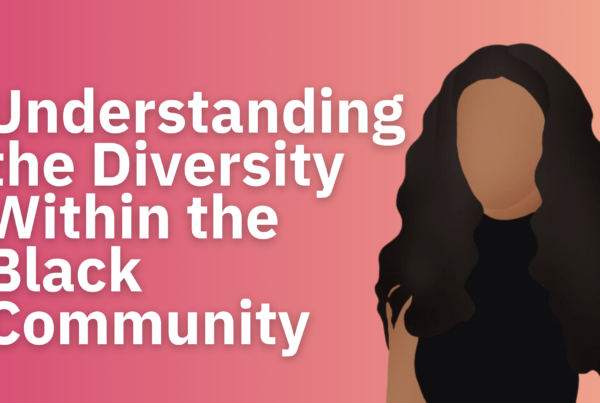Marketing trends in America are constantly evolving as businesses strive to develop innovative strategies to stay competitive. In today’s digital landscape, it is essential for companies to keep up with the latest technology and consumer behavior shifts to reach their desired target audiences. So, total marketing vs. multicultural marketing – what method will suit your brand better? Let’s check out the differences between these two approaches and then decide what to implement in your marketing strategy.
Total Marketing vs. Multicultural Marketing – What Are the Main Differences?
From traditional advertising channels such as television and print media to newer platforms like social media and online video advertising, companies must carefully consider which methods will help them reach their goals. But the fact is that diversity marketing is definitely the new wave of change everyone is talking about.
Does this mean you should give up on total marketing? Total marketing is an approach where a company advertises to all potential customers, regardless of their race, ethnicity, gender, or any other distinguishing factor. On the other hand, multicultural marketing focuses specifically on targeting consumers from different cultural backgrounds in order to reach them more effectively.
While both approaches have their merits, it’s important to understand the differences between them so that you can make an informed decision about which one is right for your business. Let’s explore the nuances of these two strategies.

What Is Total Marketing?
Total marketing relies on a one-size-fits-all approach that does not take into account any specific cultural or demographic factors. This type of marketing appeals to a wide range of potential customers but does not necessarily speak to any particular cultural group.
For example, a company might run a television commercial during primetime broadcast hours that appeals to all viewers regardless of their culture or background. The goal of total marketing is to create brand awareness and engage with as many potential customers as possible.
Image – Reuse the image with the total marketing scheme for budget allocation and target audience
What Is Multicultural Marketing?
In contrast, multicultural marketing takes into account cultural and demographic factors when creating inclusive and diverse content and campaigns. Companies that practice multicultural marketing have to do thorough market research. If they really want to understand multiculturalism, then they’ll have to understand the consumer mindset too.
For example, if a company wanted to advertise its product in Spanish-speaking countries, it would create advertisements tailored specifically for those audiences rather than using generic ads meant for global audiences. The goal of multicultural marketing is to better connect with diverse communities by creating messaging that resonates more deeply with them than generic advertising may be able to provide.
Why Multicultural Marketing Plays a Big Role in Current Marketing Strategies?
Multicultural marketing is a key element of modern marketing strategies, as it helps businesses reach a larger and more diverse audience. As the world becomes increasingly aware of diversity, businesses must be aware of how to reach different audiences and speak to them in an effective way.
This means accurately targeting and tailoring their messages to different cultures based on language, values, beliefs, customs, and interests. Marketers would look into the multicultural segment and attempt to deliver unique experiences and products that will only work for the targeted customer segment.
Proper branding will also increase the visibility of the business by being inclusive and multicultural. This can be particularly helpful for small businesses that may not have the resources to reach larger, more homogeneous audiences.
Today, Minorities comprise big chunks of all markets. The numbers are yet to grow. For example, LatinX <16 years of age represent 26% of the total population in the USA.
Which Approach Is Better for Your Business?
According to the Association of National Advertisers (ANA), total marketing is about adapting your marketing efforts to account for the demographic “fringes.” In reality, what used to be a minority is now growing to be the majority. So really, minority marketing can also be considered majority marketing in the coming years. By the same logic, diversity marketing can be considered Inclusion Marketing. Therefore, the trends are clear, and we know we’re heading for a 180˚ shift in marketing efforts.
So, if you cherish a marketing approach that is fully dedicated to addressing the needs and wants of a specific ethnicity, you should definitely consider multicultural marketing. Plus, if you decide to use some social media tools, you’ll easily see how multicultural marketing will bring a diverse audience and grow your business.
The future belongs to those WHO TRULY UNDERSTAND THEIR CONSUMERS.
The US Population Is Changing, so Should Your Marketing Strategy
The world is becoming more diverse, and younger generations are changing the demographics. Groups of people currently seen as minorities will probably reach majority status by 2044. According to the Census Bureau research data, we can see the following:
- 2020 is the year when “more than half of the nation’s children are expected to be part of a minority race or ethnic group.”
- The part of the population that is white and non-Hispanic is predicted to decrease in size over the decades to come, from 199 million in 2020 to 179 million people by 2060 – even as the US population continues to expand.
- While the total population is predicted to grow about 20% by 2060, the Black and African American populations are predicted to grow by 41,1%, and the Hispanic by 93,5%.
- People who are of two or more races are predicted to be the fastest-expanding racial or ethnic group over a number of following decades, and their numbers will be followed up by Asians and Hispanics.
If your company does not make efforts to grow with your multicultural consumers today – when they are already more than half of the population under 18 years old – it is most likely your company is not going to grow at all. Ethnic or racial minorities make up 48% of Gen Z, while it’s projected that by 2065, there won’t be any single race or ethnicity majority in the US. That’s why you should embrace an inclusive and diverse approach in your marketing approach, but also in the way you think.

What Parameters Are Needed to Choose the Right Approach?
When selecting the total marketing approach or the multicultural marketing approach, there are several factors that must be taken into consideration. The most important factor is the type of products and services being marketed as well as the audience that trusts your brand. Different types of products and services may require different strategies to reach out to different demographics.
Total Marketing could be the right approach for large enterprises that wish to further penetrate the market with their brands. Multicultural marketing is the right approach for small and medium businesses that want to target specific (minority) demographics.
What Big Brands Have Already Implemented a Multicultural Marketing Strategy?
If you still wonder whether you should do multicultural marketing or not, just remember that some of the biggest brands in America are doing it already. In fact, there are numerous great campaigns that have implemented multicultural marketing strategies to reach a wider audience. Some of the largest companies that are tapping into the power of multicultural marketing include McDonald’s, Coca-Cola, Procter & Gamble, Walmart, and Target.
These companies understand how important it is to connect with different communities and cultures in order to build strong brand loyalty. McDonald’s has been a leader in multicultural marketing for decades, launching successful campaigns to appeal to various cultures and communities around the world. The company’s “I’m Lovin’ It” campaign has been highly successful in reaching diverse audiences, particularly Hispanic consumers.
Are There Some Fails in Multicultural Marketing?
Of course, there are some failures, like the controversial Pepsi and Kendall Jenner campaign, where the star of the video joined the protest. But there’s no clue what’s the protest about, and at the end of the ad, Kendal gives the Pepsi can to a police officer. Social media comments characterized it as trivial while people are protesting against real problems like police brutality and race relations. Watch the video below and learn from the mistakes you should avoid.
If You Want to Do Inclusive and Diverse Marketing, We Can Help You With That
Ultimately, there is no “right” answer when it comes to choosing between total and multicultural marketing. It depends on what your business goals are and who your target audience is. However, things are drastically changing nowadays, and it’s a good thing because being inclusive and diverse is worth celebrating. When it comes to your business, let Phu Concepts be the multicultural marketing agency that will help you experience all the benefits of multicultural digital marketing in Rochester. Contact us for a free consultation and get one of the best Rochester marketing offers.



